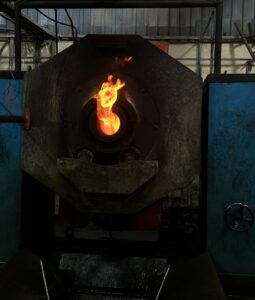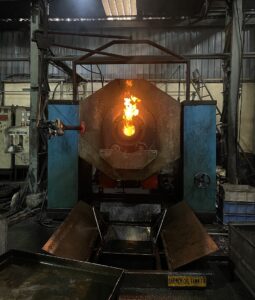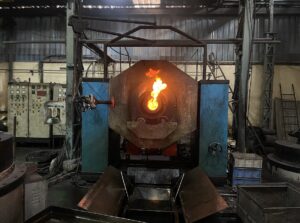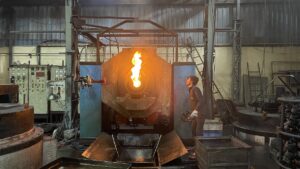A rotary furnace is a versatile and efficient piece of equipment widely used in industrial heat treatment processes. It rotates during operation, which helps evenly heat materials while promoting uniform treatment. Here’s a detailed overview of its application in heat treatment:
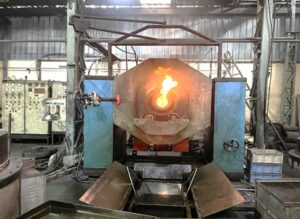 Key Features of Rotary Furnaces in Heat Treatment
Key Features of Rotary Furnaces in Heat Treatment
- Rotating Mechanism:
- The furnace drum rotates, ensuring uniform heating by continuously agitating the material.
- Prevents material clumping and improves consistency.
- Temperature Control:
- Rotary furnaces can operate at various temperatures, depending on the specific heat treatment required (e.g., annealing, tempering, or hardening).
- Precise temperature zones can be maintained along the length of the furnace.
- Atmosphere Control:
- Can operate in controlled atmospheres (e.g., inert gases like argon or nitrogen) to prevent oxidation or decarburization of metals.
- Ideal for sensitive heat treatments such as carburizing or nitriding.
- Continuous Operation:
- Many rotary furnaces are designed for continuous processing, making them suitable for high-volume production lines.
- Energy Efficiency:
- Heat recovery systems can be integrated to improve energy efficiency.
Advantages of Using Rotary Furnaces
- Uniform Heat Distribution: The rotation ensures all parts of the material are exposed to the same heat conditions.
- Versatility: Suitable for a wide range of materials, including metals, powders, and composites.
- Scalability: Available in various sizes to match production requirements.
- Ease of Automation: Modern rotary furnaces can integrate with automated systems for better efficiency.
If you would you like to explore more details feel free to contact us.



